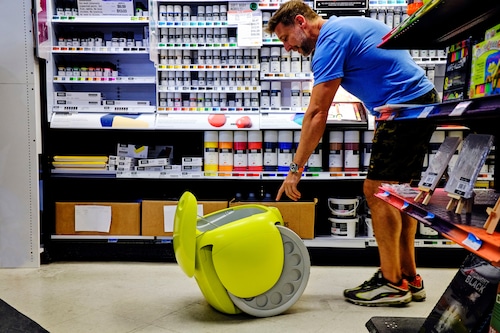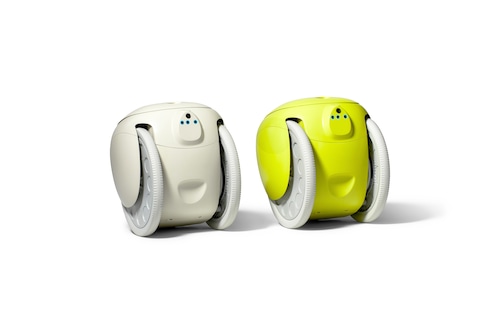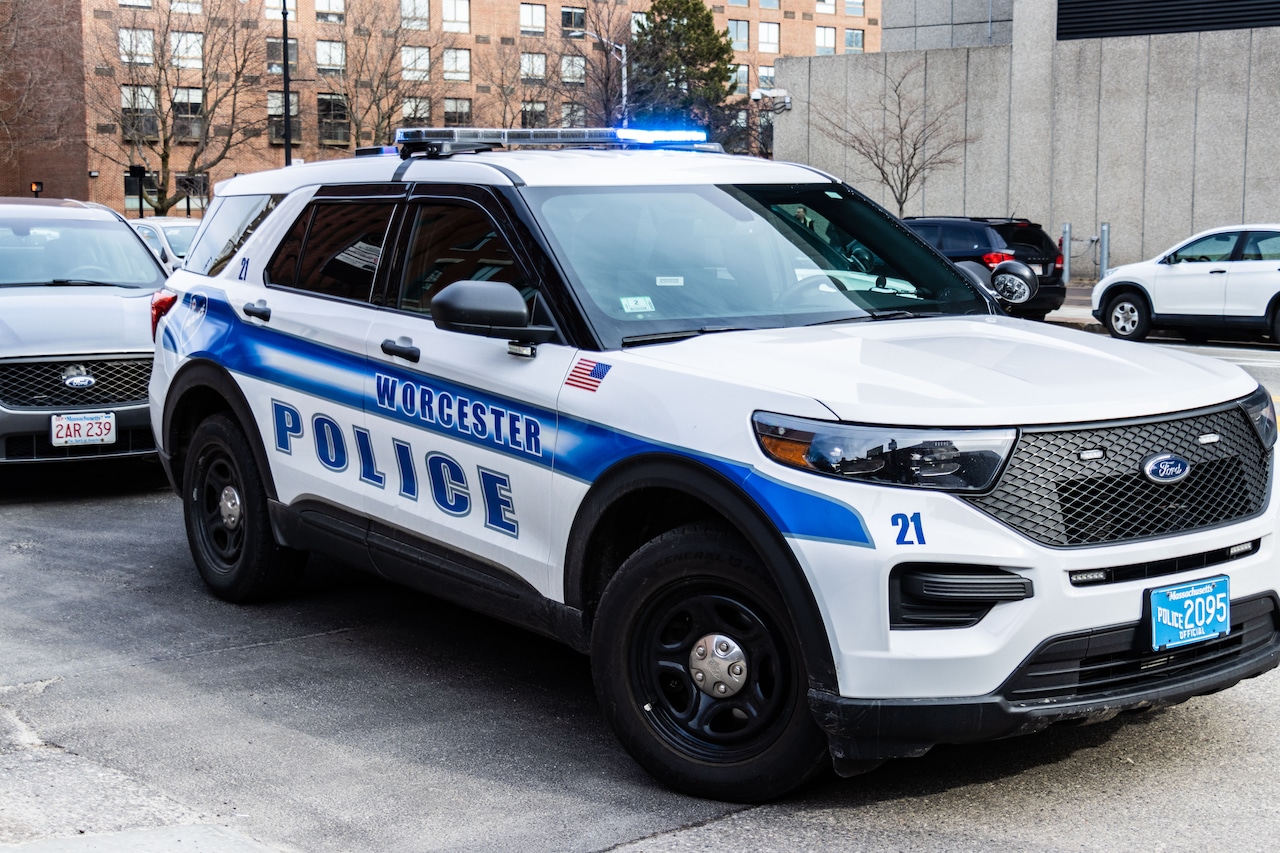We often hear about alumni from Berklee College of Music in Boston winning Grammys, Oscars, Emmys, or Tonys.
But did you know there was a select group of students who helped make sounds for robots that move on their own, carry your belongings, and come with a built-in speaker?
The sounds for the robots, called the “gitamini” and the “gitaplus,” were composed during a first-time partnership between Berklee’s Electronic Production and Design Department and Piaggio Fast Forward (PFF).
When they were designing the gitamini and gitaplus, the makers of the robots thought of their future users and bystanders, “which is a little bit unusual,” CEO and co-founder of PFF Greg Lynn told MassLive.
“People can customize the physical robot. They can’t customize the motion. And they can’t customize the sounds,” Lynn said. “We think it’s really important to think of the bystanders, as much as the individual.”
As the parent company that built the Vespa Scooter, motion has always been at the forefront of PFF’s mission.
The company placed a specific emphasis on this while developing the gitamini and gitaplus.
The robots instantly pair with users when they stand in front of the robot and turn it on.
The gitas maneuver through a combination of cameras, neural networks, color-sensing, and depth-sensing technology. The gitas are also built to follow users at a reasonable distance and can speed up and slow down based on the user’s pace.
The gitas can also self-balance, go through doors, and move over various terrain with ease. But not everything about the robot’s design could be perfectly executed through motion. That’s where sound came in.
PFF “needed sounds to let people know things are going normally, there’s a problem, and all of those things,” Lynn said. More importantly, the sounds needed to be different.
“It actually didn’t really work to have one language for all of them,” Lynn said of the gitas’ sounds. “But once we got to it, it was pretty clear you needed to have different emotions, which meant a different language of sound for all of them.”
While PFF has an entire team that ensures the gitas have pedestrian etiquette, PFF did not have anyone on staff who specialized in making those much-needed sounds.
So, Lynn decided to link up with Berklee because the school has a program where students develop sounds for machines to communicate with people. The college is also conveniently located roughly 10 minutes from PFF’s office.
“We’re a company that cares a lot about user experience and really high-quality design. So, my ambition was to do the equivalent of Brian Eno designing the Microsoft Sound,” Lynn said. “I wanted to go to somebody really amazing.”

Piaggio Fast Forward, the company that created the Vespa Scooter, created a smart-following robot known as the gita.Cody O’Loughlin
In 2018, PFF commissioned students in the Electronic Production and Design Department at Berklee to develop the sounds that would be used for both gita robots, which officially launched in 2019.
PFF worked with the students for 4-5 months to explain the behaviors of the robots and left them with two gitaminis for reference.
For the next three months, the students worked in three groups, each led by a different faculty member.
During that time, students and faculty created a “lab” to design the sounds, according to Panos Panay, president of The Recording Academy and former Vice President for Innovation and Strategy and Managing Director of the Berklee Institute for Creative Entrepreneurship.
The sounds, which were all produced electronically, started out as noises that resembled what one hears in an elevator or anything “very much environmentally focused,” Lynn said.
However, PFF wanted the robot to feel more “friendly, accessible and responsive,” Panay said.
So, “striking the right balance between human and futuristic, digital and organic,” was key for the project. It was also critical “that the sounds felt organic and created a connection between the gita and the user,” he added.
With that in mind, the students at Berklee made the sounds resemble more of those that a machine makes. The students developed hundreds of variations of the sounds until they perfectly matched the gitas’ motions and efficiently communicated with humans.
“We knew that we needed to do certain things to let people know that this robot is not just rogue, out in the world, delivering a burrito or something,” Lynn explained. “… This robot is accompanying this person, and how do we let people know that the robot and the person are moving together, and the robot is following attached to the person.”
The gitamini and gitaplus have sounds that represent several functions that represent commands like pairing and unpairing to powering up and shutting down.
The sounds also serve as an indicator of the robots’ power status, battery levels, and parking. Not every sound made the final cut, with Lynn saying how some could have driven users crazy.
“There were some great sounds that the robot could have made that we just said, ‘Yeah, it sounds great now, but what about like 30 times if you’re trying to do something and you didn’t ask this robot to be there with you,’” he said. “We’re very conscious of the people around the robot, sometimes maybe at the expense of the pleasure and fun of the owner, but we want them to be like good citizens.”
In addition to getting a stipend for their work, the project was a great opportunity for Berklee students to have hands-on experience in a project with a commercial release.
“Working with Piaggio Fast Forward and the team on a project that would find itself in the hands of real consumers was a massive opportunity for students to grapple with the kinds of problems, compromises and negotiations that one needs in striking the right balance between art and commerce, design and function,” Panay said.

Piaggio Fast Forward, the company that created the Vespa Scooter, created a smart-following robot known as the gita.Cody O’Loughlin
In addition to their smart following technology, the gitamini and gitaplus have built-in Bluetooth speakers that let users take their music on the go while cleaning the house, spending time at the beach, or going on a walk.
If someone has to carry their gita up the stairs, over a curb, or into the car, then they can use the built-in handles for any hurdles they may face while roaming around with their robot.
The robots are controlled through the “mygita” app, which allows users to lock the robot’s storage bin, stream music, and more through their phones. The gita’s following technology is not controlled through the app, and the robot can be turned off using a button on the robot itself.
The gitamini retails for $2,475 while the gitaplus goes for $3,475. The gitaplus can carry up to 40 pounds while the gitamini can carry up to 20 pounds. The robots come in several colors including Rapid Blue, Espresso Brown, Spark Citron, and Boardwalk Beige.
While both robots take two hours to fully charge, the gitamini can last up to six hours, and the gitaplus up to seven hours without being recharged. More information about the robots, and their technology, can be found on PFF’s website.






